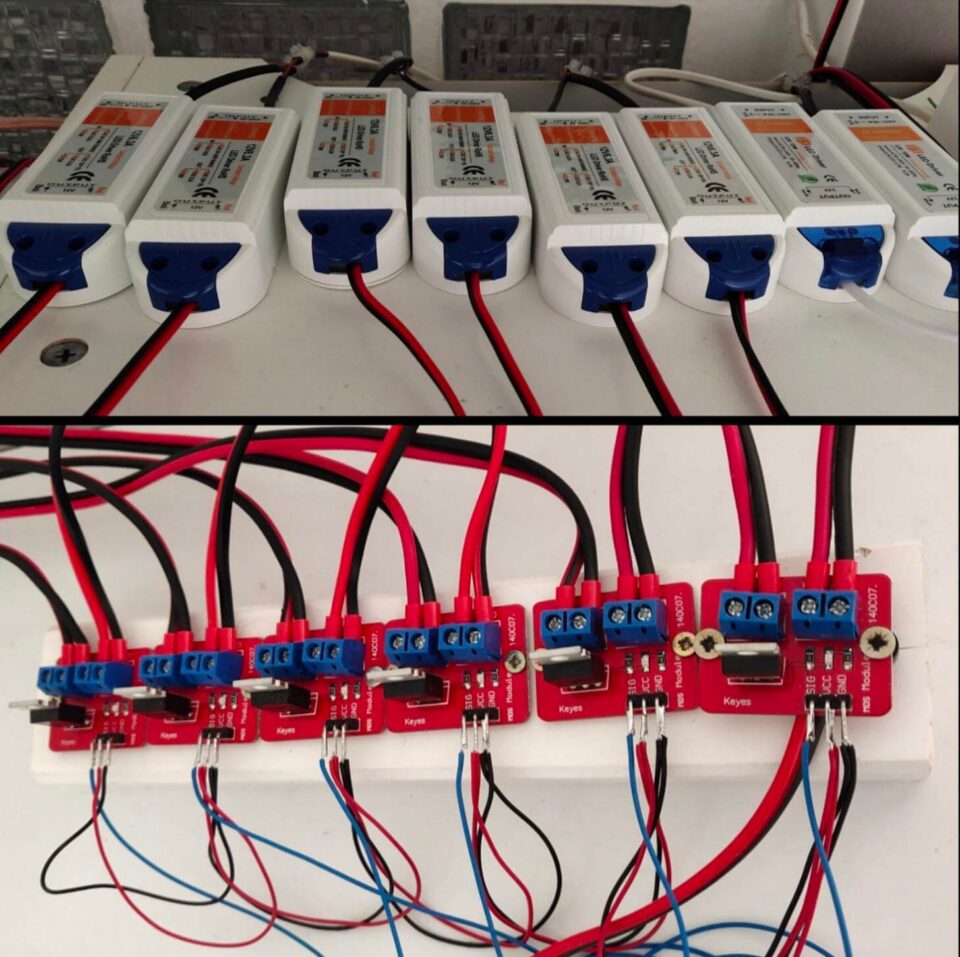LED strip lights are environmentally friendly, use less power, have a longer life and require little maintenance. Additionally, LED strip lights are available in different brightness levels, dimensions such as size, length, and designs as well as colour temperatures to suit all your commercial lighting needs. You can find a great range at RS Components.
LED strip lights can be easily installed in any location, be it outdoors or indoors, any tight and difficult to reach spaces like under the stairs, inside, under and around cabinets or shelves and allows for consistent illumination. If you are planning to upgrade or renovate your lighting system or move to a long-lasting, reliable and greener lighting option, LED light strips are a more desirable and economical choice.
But how are LED strip lights wired? This article explains the different ways of wiring LED strips.
Wiring the power supply for a single-colour LED strip
To wire a single colour LED strip, you first need to connect your 240V mains supply using the positive and negative leads to the input terminals of your LED transformer. Then connect the positive and negative leads of your LED strip’s starter to the transformer’s output terminals. If you need a longer strip i.e., longer than 32 feet, then you would need to run a parallel set of wires to the point where the first strip ends to feed the second strip with power.
Wiring a power supply for two or more single-colour LED strips
If the output wattage permits, one LED transformer can be used to power two or three LEDs. To power LED light strips with more than three white or single-coloured LEDs, you will need a connector-block that will split the single power supply across many outputs.
Connect the input terminals of the LED transformer to the 240V mains supply using the positive and negative leads and its output terminals to the connector blocks input. Then connect each LED strip starter lead to the connector blocks output. Connector blocks are available with multiple outputs.
Wiring a power supply for a dimmable single-colour LED strip
To add a dimmable option to a single-colour LED strip, you’ll need to add a dimmer to your LED transformer during installation. For this, you need to connect your LED transformer’s input terminals to the 240V mains supply and its output terminals to your inline LED dimmer. If using the transformer to power multiple LED dimmers, you would need a connector block with multiple outputs.
There are other options available to dim your white or single-colour LEDs or control your colour-changing LED strip lights such as wireless dimmers, remote dimmers or by using Wi-Fi adapters.
Wiring the power supply for a colour-changing LED strip
Colour-changing LEDs are controlled using an LED controller. You need to add an LED controller between the power supply and the LED strip during installation. Connect the input terminals of the LED transformer to the 240V mains supply and the output terminals to your LED controller. For a wireless LED controller, you would need to install an LED receiver to receive its radio-frequency signal.
LED strip lights consist of many individual LED emitters mounted along flexible circuit board strips at regular intervals.
